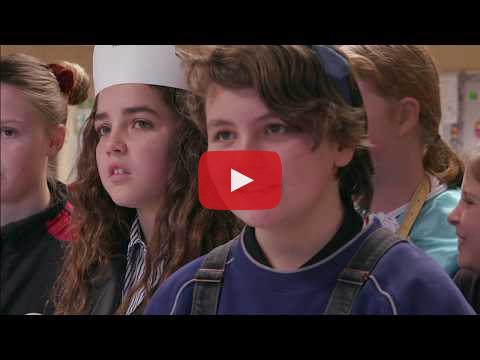Bringing national education news to parents
No Images? Click here


JULY 2019
This year's NAPLAN results will be sent to schools to distribute to parents around August/September, depending on your state/territory.
So, what should you do with the results?
Your child’s results are a good starting point for you to see what your child knows and has achieved in the areas of reading, writing, spelling, punctuation, grammar and numeracy. You can also see how your child has performed against the national average (over one million students participate in NAPLAN tests each year) and the national minimum standards. NAPLAN is unique in that it’s the only test across the nation which gives teachers and schools an indication of how kids are progressing.
You can use the results during parent–teacher interviews or other catch-ups with your child’s teacher, or to discuss with your child how they feel about how and what they are learning. Are these the results you expected? Are there any areas that need special attention, or that your child may need assistance with? Your child’s teacher knows their learning best and will be able to explain further what the results mean.
For more information on interpreting your child’s results, you can also check out the NAPLAN FAQs on the NAP website.
LATEST NEWS
Never too early to think about careers
Our communications officer’s three-year-old son is adamant he wants to be a garbage truck driver when he grows up. “Or a mailman!” While we don’t know what the world will look like in 15 years’ time when he’s old enough to work, schools around Australia, like Hillman Primary School in WA, are already prepping students as young as five to think about who they might be when they leave school.
Teachers at Hillman PS have taken a holistic approach to careers education – from involving local businesses in careers days to setting up a play-based learning ‘street’ featuring types of community businesses students could work in. Check out some of the videos available on our website.
Fanning the flames of wonder! Episode 2
Our CEO David de Carvalho’s latest vlog post for his new video series, Fanning the flames of wonder, is now available. In episode 2, David reflects on the second word in
our organisation’s name – ‘curriculum’. He explains how one of our cross-curriculum
priorities – Aboriginal and Torres Strait Islander Histories and Cultures – can be embedded into key learning areas of the curriculum. It’s a timely reflection on the importance of learning about our nation’s First Peoples, as we recently marked NAIDOC Week and launched our second Reconciliation Action Plan ‘Innovate’ in May.
Review of the Melbourne Declaration
What are your thoughts on education in Australia? Now it’s your chance to be involved in the review of the Melbourne Declaration on Educational Goals for Young Australians. This document was published in 2008, outlining a national vision for education in Australia, and last year, Minister for Education, the Hon. Dan Tehan MP, advised it was time it was reviewed.
A public submission process has been completed, and now Education Council is holding consultation events around Australia to seek further input from the education community (including parents). Get involved and have your voice heard! You can read more about the review on the website.
Updated health guidelines for children
The Australian Government Department of Health recently published new 24-hour movement guidelines for 5–17-year-olds, outlining the right balance of high levels of physical activity, low levels of
inactivity and sufficient sleep required for optimal health.
See the new guidelines on their website.
"What did you do in school today?"
Tired of hearing ‘nothing’ whenever you ask your child this question?
The Australian Council of State School Organisations (ACSSO) offers some suggestions of other things you can ask when your child gets home – like, “What challenged you today? What is one thing you learnt from your teacher?”
Q&A
Q: How do researchers use NAPLAN data?
A: Being the only national literacy and numeracy test Australian students take four times during their schooling life, NAPLAN provides data that is valuable for researchers looking at social trends among Australia’s young people.
For example, a recent PwC study showed that children who attend early childhood education have improved literacy and numeracy (as measured by NAPLAN) and better social and emotional abilities. And research conducted by the Centre of Independent Studies investigated some of Australia’s top-performing disadvantaged schools in terms of their NAPLAN results, with the aim of finding common policies and practices which had led to their success.

Sharing is caring!
Want to share the love with your friends and colleagues? You can easily share by clicking the 'Forward' button (mail icon) at the bottom of this newsletter.
WRITE FOR US
We’d love you to contribute to our newsletter. Email us at parentupdate@acara.edu.au.



